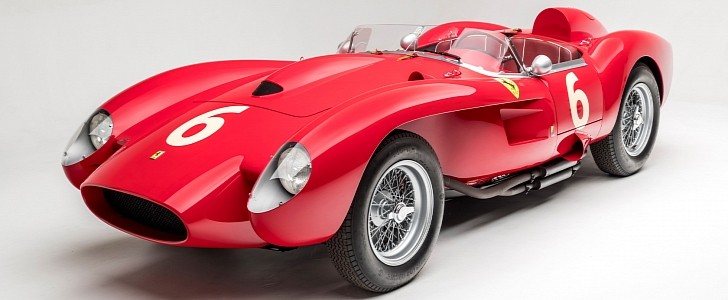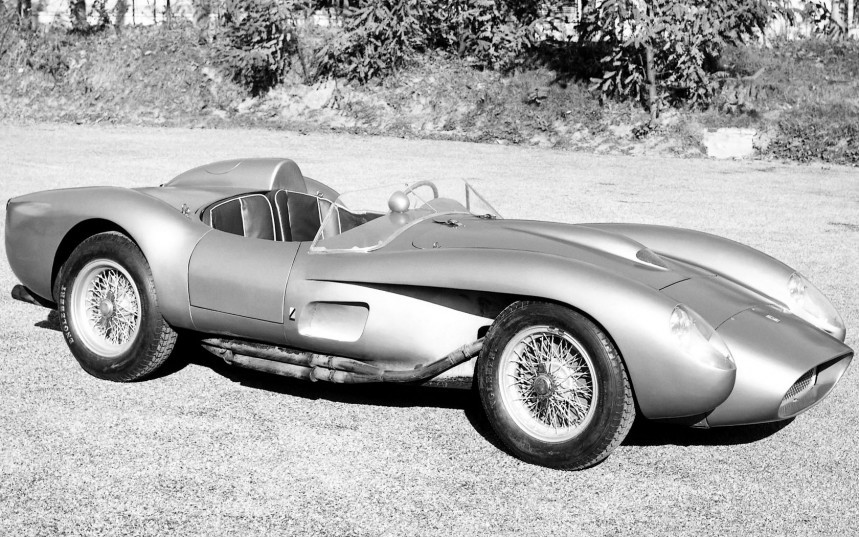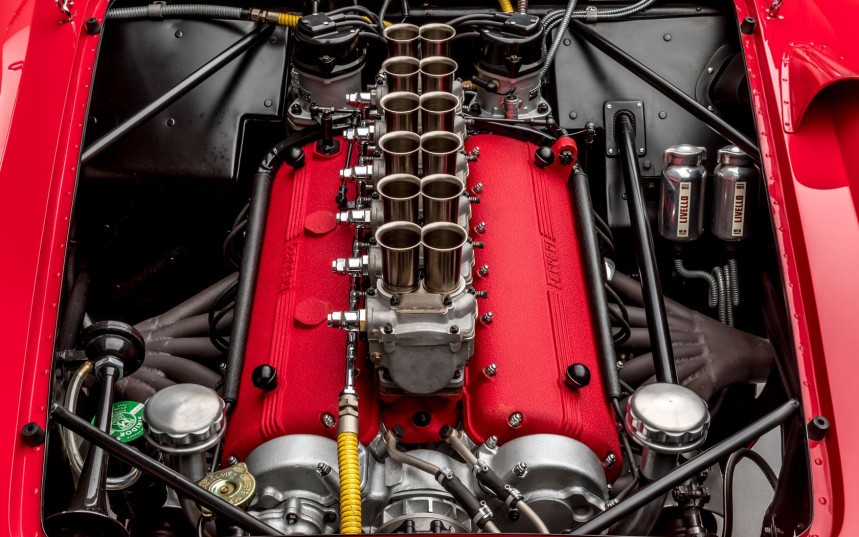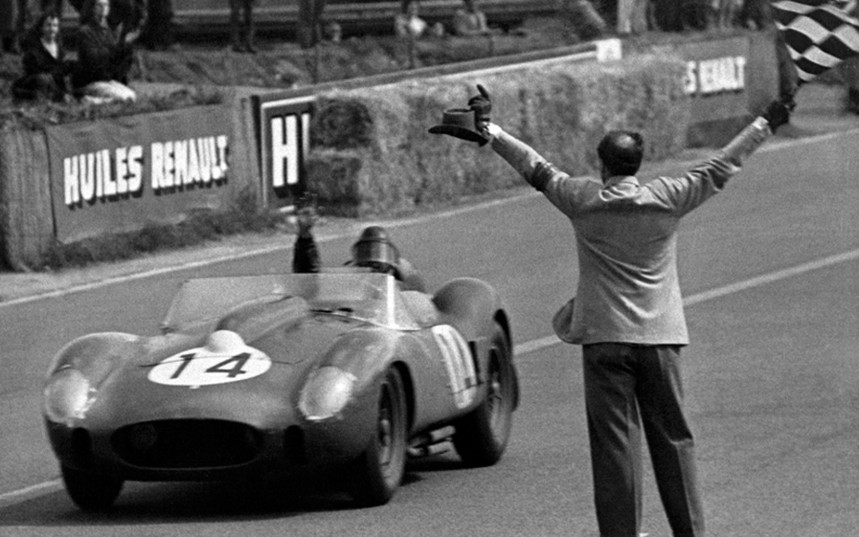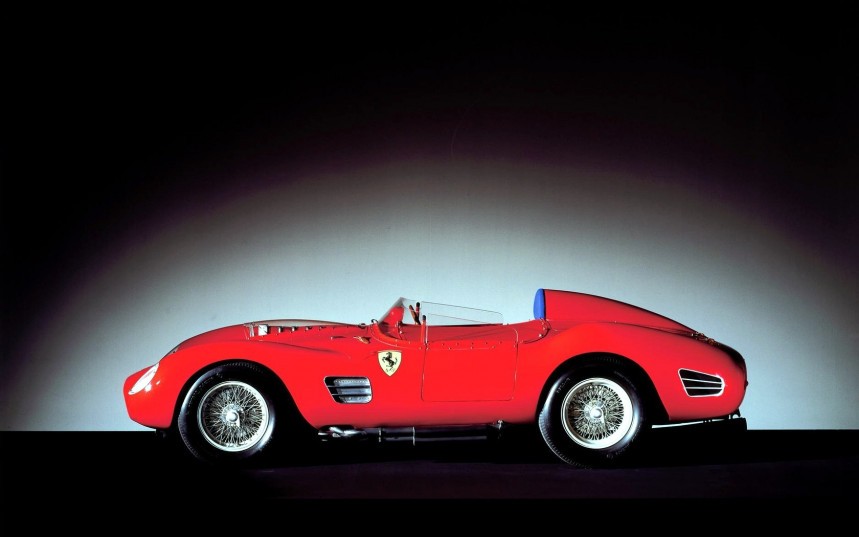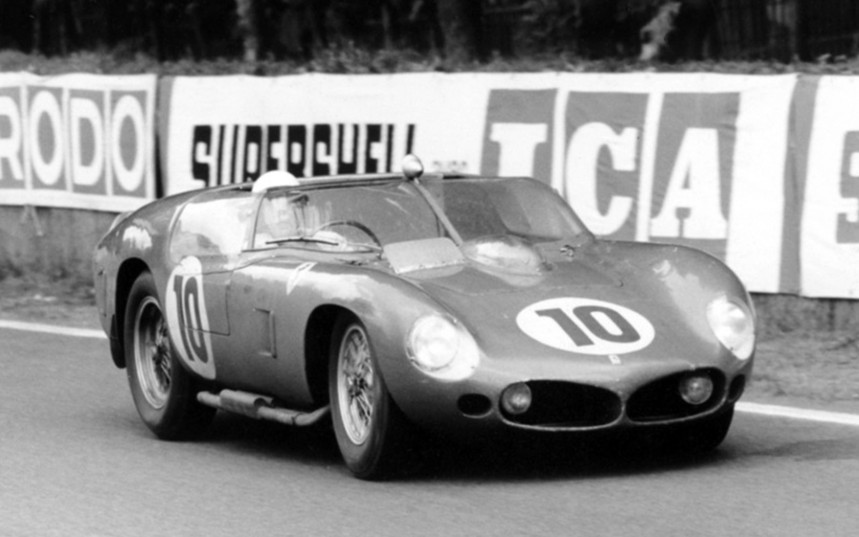Back in the fifties, Ferrari was beginning to dominate the motorsport world, building some of the greatest race cars to ever grace the tarmac. One of those was the 250 Testa Rossa, which won the 24 Hours of Le Mans three times in four years of service.
The year was 1957, Ferrari was in fierce competition with Maserati and Jaguar and was about to win the World Championship for Sports Cars for the fourth time in the last five years.
But talk around the paddock focused on rumors that FIA was about to enforce a three-liter engine displacement limit for the upcoming season in response to the increasing number of major accidents.
Hearing the rumors, Enzo Ferrari rallied his best engineers and demanded they urgently improved the existing 500 TRC so that it would not only remain competitive but dominate every race it enters in the following seasons.
He told Carlo Chiti, who was chief designer at that time, he wanted a reliable car, that this was not a time for experiments and failure was not an option.
Chiti, who was also involved in the development of the Ferrari 246 F1 racecar that season, was known for his ingenuity and thirst for innovation. He initially went for a conservative approach and developed a prototype along with Andrea Fraschetti, one of Ferrari’s most talented engineers who unfortunately died that year during a test drive.
They modified a tubular steel spaceframe chassis taken from a 500 TR, extending its wheelbase by 10 cm (4 in) to 2.35 meters (92.5 in). It had an independent front suspension system with coil springs, and a solid axle layout was initially chosen for the rear.
The body of the prototype was based on a 290 MM designed by Scaglietti and was hastily assembled to compete in the Nürburgring 1000 Km race. To power the new racecar, a Colombo-designed 3.0-liter V12 used in the 250 GT series was chosen, albeit heavily modified for improved performance.
The unit received six Weber 38 DCN carburetors instead of the 250 GT’s standard three, while piston connecting rods were machined from steel billet rather than forged, which improved durability. In keeping up with the tradition that originated in the 500 TR and gave birth to the Testa Rossa (literally, ‘red head’) name, the cam covers were painted bright red.
The result was codenamed Tipo 128 and generated 300 hp (220 kW) at 7,000 rpm. It gave the 250 Testa Rossa a power-to-weight ratio of 100 hp per liter and quickly became known as one of the most durable engines ever created.
The car was continuously improved and modified during its four-year lifespan, which led to many differences between individual cars and a host of names and abbreviations.
In 1958, the 250 Testa Rossa would dominate the World Sportscar Championship, winning four out of the six races, including the famed 24 Hours of Le Mans and the open-road Targa Florio. Drivers included Phill Hill, Olivier Gendebien, Luigi Musso and Peter Collins.
The next season, the body design was lightly revised by Pininfarina, with Fantuzzi constructing the panels. For the first time on a Ferrari sports car, drum brakes were replaced by a Dunlop disc system. A new 5-speed transmission was also introduced, replacing the previous 4-speed version.
Scuderia Ferrari scored a 1-2 win in the first race of the season at the Sebring International Raceway but never managed to get it going afterward, losing the 1959 championship to Aston Martin and its DBR1/300 model driven by the likes of Sir Stirling Moss and Caroll Shelby.
After taking a beating for the first time in the last four years, Scuderia Ferrari engineers continued to improve the Testa Rossa, which now featured a dry-sump lubrication system that enabled them to lower the engine and the car’s center of gravity.
Aerodynamics were greatly improved as well, and one of the factory cars received a redesigned rear independent suspension.
This time, reigning champion Aston Martin's cars were not returning to the competition, leaving the door wide open for Scuderia Ferrari. In one of the most epic and closely contested seasons in motorsport history, Porsche emerged as the favorites with their 718 RS winning two out of the first three races.
The final two races were the Nürburgring 1000-km and the 24 Hours of Le Mans. Sir Stirling Moss and Dan Gurney were the surprise winners in Germany, driving a Maserati Tipo 61 for Camoradi /USA Racing Team with Porsche coming second and Scuderia Ferrari third.
This meant that whoever won the 24 Hours of Le Mans would also win the championship. Faced with a must-win situation, Ferrari entered 13 works and privateer cars into the race, five of which were 250 Testa Rosas.
After 314 grueling laps, the number 11 Ferrari 250 TR59/60 driven by Belgians Olivier Gendebien and Paul Frère won the race, followed by the 250 TR 59 driven by Jean Behra and Cliff Allison. The following ten cars that finished were either Porsche or Ferrari but, in the end, the Italians won their sixth title.
1961 marked the final year for the 250 Testa Rossa. Independent rear suspension was now standard, and the bodywork was completely redesigned by Fantuzzi.
Scuderia Ferrari would go on to dominate the season, winning all races except the Nürburgring 1000. The 250 TR61 was also triumphant at Le Mans driven by Phil Hill and Olivier Gendebien, while another Ferrari came second.
The 250 Testa Rossa was by far the most reliable and groundbreaking car of its era, paving the way for the legendary 250 GTO, 250 P, and 250 LM - all of which used the Tipo 128 V12 and many aerodynamic innovations pioneered on the 250 TR.
Currently, it is one of the most valuable vintage cars out here, especially because only 33 units were produced. Fashion designer Ralph Lauren's extensive auto collection features two of them and a 250 TR; the latter, sporting chassis number 0704, reportedly sold privately in 2014 for $39.8 million.
But talk around the paddock focused on rumors that FIA was about to enforce a three-liter engine displacement limit for the upcoming season in response to the increasing number of major accidents.
Hearing the rumors, Enzo Ferrari rallied his best engineers and demanded they urgently improved the existing 500 TRC so that it would not only remain competitive but dominate every race it enters in the following seasons.
He told Carlo Chiti, who was chief designer at that time, he wanted a reliable car, that this was not a time for experiments and failure was not an option.
Chiti, who was also involved in the development of the Ferrari 246 F1 racecar that season, was known for his ingenuity and thirst for innovation. He initially went for a conservative approach and developed a prototype along with Andrea Fraschetti, one of Ferrari’s most talented engineers who unfortunately died that year during a test drive.
They modified a tubular steel spaceframe chassis taken from a 500 TR, extending its wheelbase by 10 cm (4 in) to 2.35 meters (92.5 in). It had an independent front suspension system with coil springs, and a solid axle layout was initially chosen for the rear.
The unit received six Weber 38 DCN carburetors instead of the 250 GT’s standard three, while piston connecting rods were machined from steel billet rather than forged, which improved durability. In keeping up with the tradition that originated in the 500 TR and gave birth to the Testa Rossa (literally, ‘red head’) name, the cam covers were painted bright red.
The car was continuously improved and modified during its four-year lifespan, which led to many differences between individual cars and a host of names and abbreviations.
In 1958, the 250 Testa Rossa would dominate the World Sportscar Championship, winning four out of the six races, including the famed 24 Hours of Le Mans and the open-road Targa Florio. Drivers included Phill Hill, Olivier Gendebien, Luigi Musso and Peter Collins.
Scuderia Ferrari scored a 1-2 win in the first race of the season at the Sebring International Raceway but never managed to get it going afterward, losing the 1959 championship to Aston Martin and its DBR1/300 model driven by the likes of Sir Stirling Moss and Caroll Shelby.
After taking a beating for the first time in the last four years, Scuderia Ferrari engineers continued to improve the Testa Rossa, which now featured a dry-sump lubrication system that enabled them to lower the engine and the car’s center of gravity.
This time, reigning champion Aston Martin's cars were not returning to the competition, leaving the door wide open for Scuderia Ferrari. In one of the most epic and closely contested seasons in motorsport history, Porsche emerged as the favorites with their 718 RS winning two out of the first three races.
The final two races were the Nürburgring 1000-km and the 24 Hours of Le Mans. Sir Stirling Moss and Dan Gurney were the surprise winners in Germany, driving a Maserati Tipo 61 for Camoradi /USA Racing Team with Porsche coming second and Scuderia Ferrari third.
This meant that whoever won the 24 Hours of Le Mans would also win the championship. Faced with a must-win situation, Ferrari entered 13 works and privateer cars into the race, five of which were 250 Testa Rosas.
After 314 grueling laps, the number 11 Ferrari 250 TR59/60 driven by Belgians Olivier Gendebien and Paul Frère won the race, followed by the 250 TR 59 driven by Jean Behra and Cliff Allison. The following ten cars that finished were either Porsche or Ferrari but, in the end, the Italians won their sixth title.
1961 marked the final year for the 250 Testa Rossa. Independent rear suspension was now standard, and the bodywork was completely redesigned by Fantuzzi.
The 250 Testa Rossa was by far the most reliable and groundbreaking car of its era, paving the way for the legendary 250 GTO, 250 P, and 250 LM - all of which used the Tipo 128 V12 and many aerodynamic innovations pioneered on the 250 TR.
Currently, it is one of the most valuable vintage cars out here, especially because only 33 units were produced. Fashion designer Ralph Lauren's extensive auto collection features two of them and a 250 TR; the latter, sporting chassis number 0704, reportedly sold privately in 2014 for $39.8 million.
